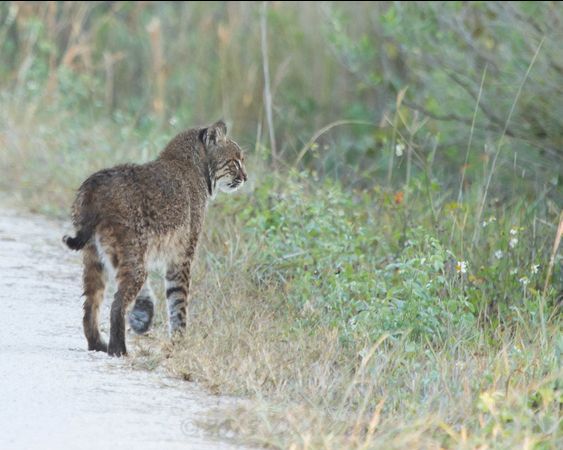
Because I live in western Pennsylvania I’m always excited to see a bobcat.
Bobcats (Lynx rufus) are descendants of Eurasian lynx that likely crossed the Bering Land Bridge 2.6 million years ago. Twice the size of house cats they have short tails, wide faces (actually long face fur) and tufted ears.
Bobcats range from Canada to Mexico but there’s a gap in their distribution from western New York to eastern South Dakota.
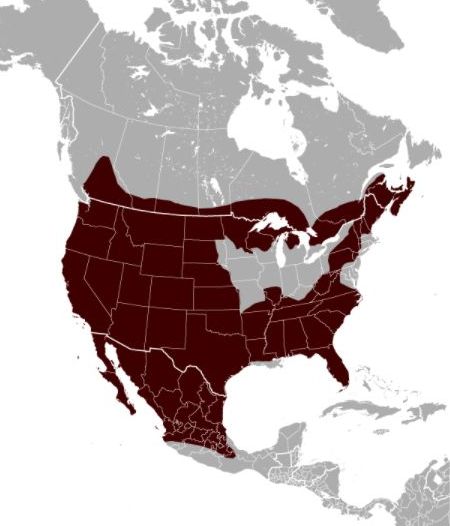
The gap is a mystery to me because we have everything they need. Their preferred habitat is woodland interrupted by old fields and rocky outcrops and they are opportunistic hunters. They eat mostly rabbits, but also squirrels, rodents, birds, frogs and even fish!
Bobcats hunt just like house cats. They crouch and wait for food to walk by, then pounce on it. This technique means they have to be camouflaged so their fur color varies depending on where they live.
The bobcat Don Weiss photographed in Florida, shown at top and below, has dark fur and small spots.
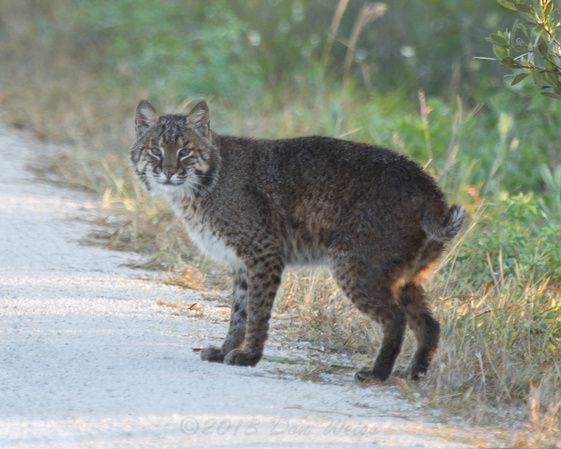
This bobcat in Arizona is much paler with big spots. Donna Memon noticed it in her Tucson backyard when one of them (a family of three!) growled from a distance as if to say, “Stay away. I’m worried that you’re dangerous.”
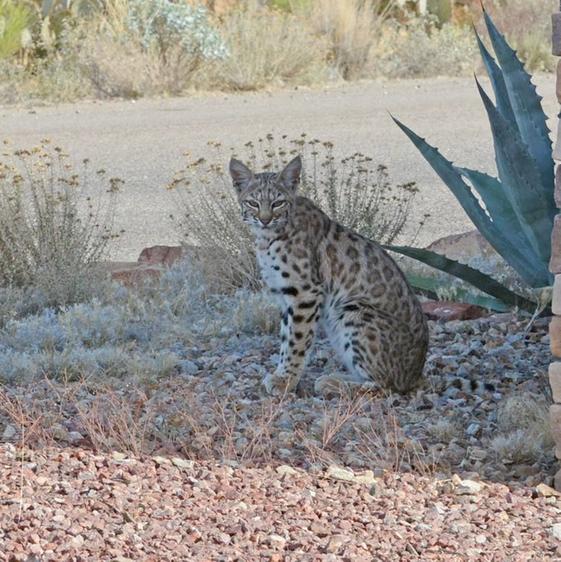
It’s normal that the bobcats would be wary of us. We humans and our dogs are their #1 threat.
Bobcats can’t outrun dogs but they can climb … even on telephone poles.
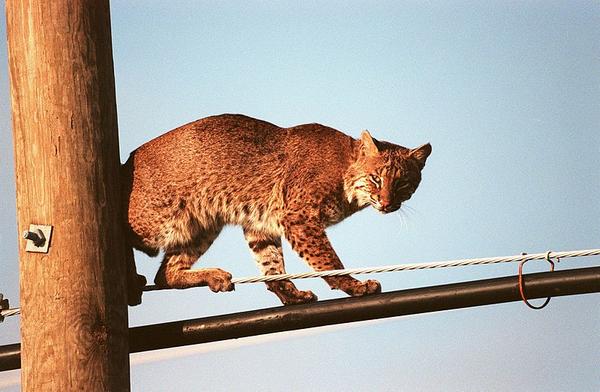
So why aren’t bobcats in western Pennsylvania? Well, maybe they’re moving in.
In the mid 1970’s, bobcats were considered so scarce in Pennsylvania that they were listed as Vulnerable. Back then they lived completely isolated from humans and those locations were disappearing fast. However, the bobcats adapted. By 2000 their population had grown enough that the Game Commission allowed limited trapping and now, almost 20 years later, our bobcat population is still growing and expanding its range.
Perhaps bobcats will make it to Schenley Park some day. 🙂
(photo credits: bobcats on the ground by Don Weiss and Donna Memon. Map and bobcat on wires from Wikimedia Commons; click on the image to see the original)
They probably are already in the city.
My friend Brad claims he had a female cat × bobcat when he stayed at a field station in an isolated area when he was doing field studies in Washington state. He owned the mother. I never checked to see if a hybrid was possible.
Mark, yes hybrids are possible. The literature says it’s usually from a female house cat mating with a male bobcat.
They’re definitely around: several years ago I saw a bobcat in Washington county (near Enlow Fork).
Bobcats in the park? “From your mouth to God’s ear,” as they say. Do they eat fawns? Andrea keeps agitating for a cougar ….
My Dentist had pictures of a Bobcat resting on his front steps at his McCandless home around July 17, 2013. His two German Shepards were not happy about the visit. The Bobcat wasn’t worried about the dogs at all. The story was on the news & in one of the newspaper.
I had my first ever bobcat sighting last Sunday (Dec. 15, 2019) during a Christmas Bird Count, near the town of Claysville, Washington County. It came out of the woods, crossed the road in front of us and headed toward a large field. What a thrill, I hope I see another one someday!
Very cool!